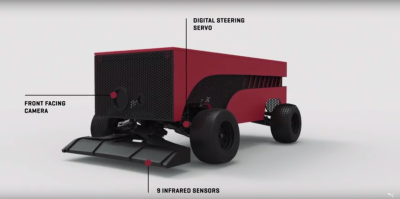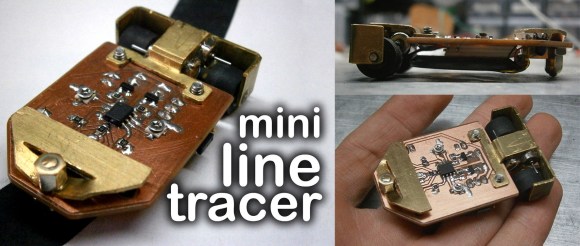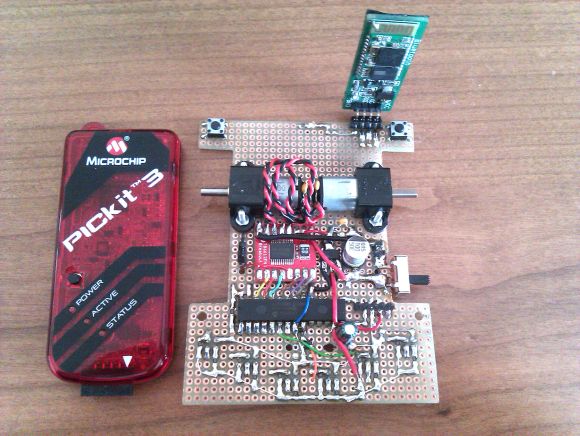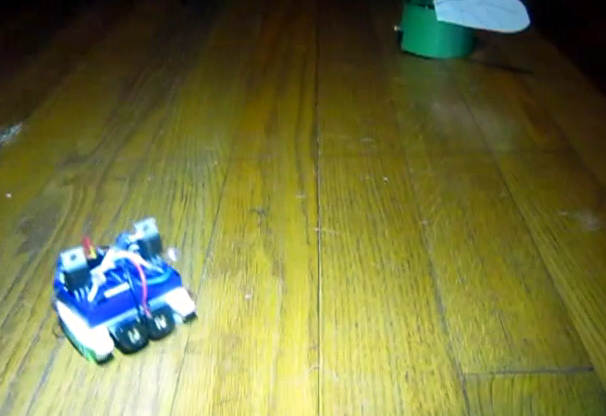Can your line following robot move faster than [Usain Bolt] who has been described as “The World’s Fastest Timed Human”? Puma, the athletic footwear, apparel and accessories company, created such a robot to help train their company sponsored athletes.
The shoebox-sized robot exceeds [Bolt]’s top speed of 44-km/hour. At that speed, following a line gets tricky. It took the development team 8 prototypes to attain that capability. Inside the BeatBot an Arduino reads 9 infrared sensors for line detection at 100 samples a second. A digital servo controls the Ackerman steering mechanism to follow the line on the track or floor. Wheel encoders provide the data for speed and distance measurement.
The user can set the distance of the run and the time to beat. Run pacing can also be adjusted. LEDs on the robot provide the starting ‘gun’ and help the runner see the BeatBot using peripheral vision. Two GoPro cameras, front and rear, provide a visual record of the run.
Puma believes that actually running against a competitor, even a robot, improves performance more than just running against the clock. They’re betting a grown-up line follower will help Olympic class athletes improve their performance. Continue reading “Line Following Robot Trains Runners”



















